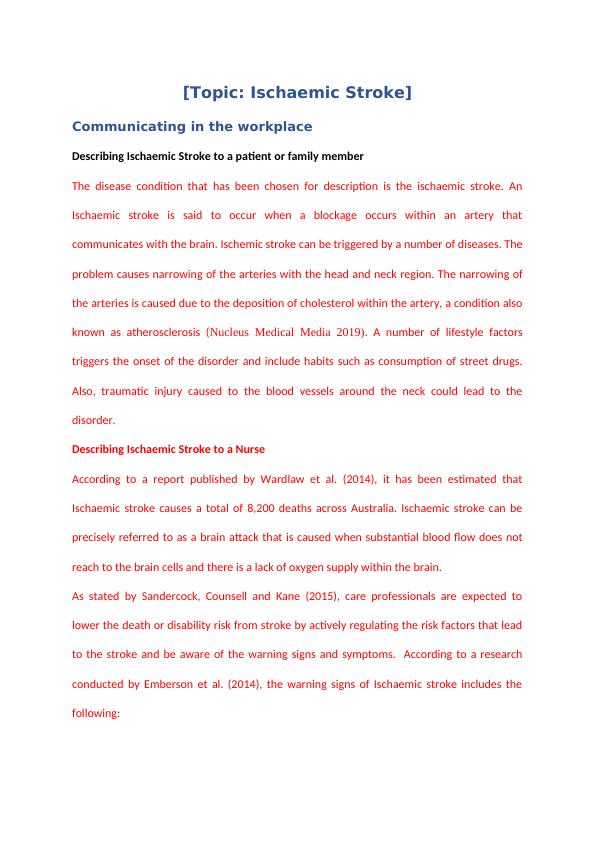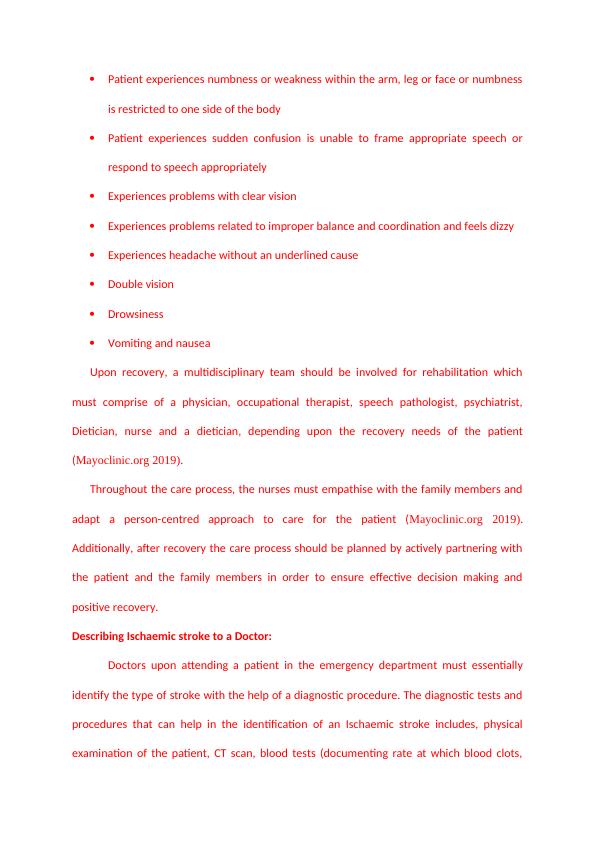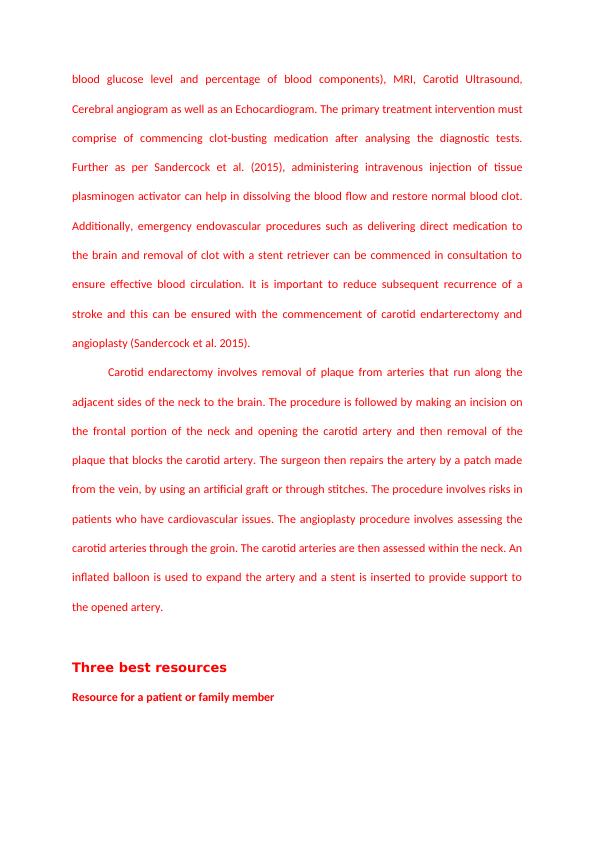Describing Ischaemic Stroke to Patients and Healthcare Professionals
Describing [disease/condition] to a patient or family member and a healthcare professional, and providing three best resources for each audience.
7 Pages2100 Words53 Views
Added on 2023-03-17
About This Document
This article provides a comprehensive description of Ischaemic Stroke, including its causes, symptoms, diagnosis, and treatment. It also offers resources for patients, nurses, and doctors to learn more about the condition. Desklib is your go-to online library for study material.
Describing Ischaemic Stroke to Patients and Healthcare Professionals
Describing [disease/condition] to a patient or family member and a healthcare professional, and providing three best resources for each audience.
Added on 2023-03-17
ShareRelated Documents
End of preview
Want to access all the pages? Upload your documents or become a member.
Mrs. London’s Case Study: Pathophysiology, Communication, and Nursing Care
|14
|4060
|431
Diagnosis and Treatment of Stroke
|7
|1410
|216
Rehabilitation Nursing Practice for Stroke Patients
|11
|3350
|441
Collaborative Nursing Practice for Ischemic Stroke: Clinical Judgement, Evidence-Based Practice, and Challenges
|14
|5675
|416
Research and Plan
|6
|1422
|66
Stroke Document Assesment Analysis
|7
|1751
|22



